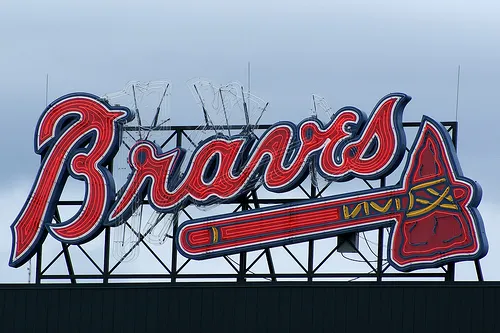
Atlanta’s bullpen spending is Top 5 in MLB, and might go up in 2024.

We’ve seen the Atlanta Braves sign two of their own free agents in the days before free agency officially opens, bringing back both Pierce Johnson and Joe Jiménez on multi-year deals.
Those signings continue a trend of bullpen spending for the Braves – over the last three seasons, Atlanta’s consistently been top five in bullpen spending both in total dollars and as a percentage of the payroll.
2024 projects to be the same, with Atlanta’s current commitments putting them top five in both categories.
| Combined salaries | Percentage of payroll | |
|---|---|---|
| 2021 | $26.1M | 17.11% |
| 2022 | $29.9M | 16.6% |
| 2023 | $33.8M | 16.37% |
| 2024 | $34.4M | 16.1% |
(The 2024 salary figure in the above table is assuming that Atlanta declines the options on Brad Hand ($7M, mutual), Kirby Yates ($5.75M, club), and Collin McHugh ($6M, club), picks up the options on Eddie Rosario ($9M, club) and Charlie Morton ($20M, club), and sticks with the published projections for Atlanta’s arb eligibles.)
Like we said, Atlanta’s consistently in the top five in bullpen spending across MLB during this period, no matter if you measure it via total dollars or percentage of payroll.
That spending follows a pretty standard formula:
1 highly-paid reliever as closer – currently Raisel Iglesias, formerly Kenley Jansen (2022) and Will Smith (2021)
Up to three moderately-paid setup pitchers – AJ Minter in 2023 ($4.75M), Chris Martin in 2021 ($7M) are perfect examples here, but there’s plenty across all three years.
Lower-paid middle and back-end relievers make up the rest – plenty of examples, from Michael Tonkin ($750k) and Jesse Chavez ($1.2M) last year to blasts from the past in Grant Dayton ($900k in 2021), and the combo of Dylan Lee ($525k) & Jackson Stephens ($680k) in 2022.

2024’s already on track to match the pattern, with Iglesias ($16M) as your highly-paid closer, the trio of Jiménez ($8M), Johnson ($7M), and Minter (estimated $6.5M in arbitration) as your three moderately-paid setup pitchers, and the rest of the bullpen innings covered by cheaper options like Tyler Matzek ($1.9M), Dylan Lee ($770k), etc. Picking up any of those above options, or making any additional signings for the pen outside of a small dollar deal (say, for Jesse Chavez) stand to push Atlanta from a Top 5 bullpen by cost into the Top 3 or even the highest-paid pen in MLB for 2024.
Has Atlanta’s bullpen spending worked?
On the aggregate, I think it has, yeah. Depending on how you measure, Atlanta’s bullpen has been above-average in its performance.
Admittedly, there’s going to be some folks who read this and are annoyed that Atlanta’s paying top five money for an “above-average” bullpen. There’s also going to be folks who go look at specific notable stats, like blown saves, and point out how many Atlanta’s had over the last few years – the Braves had the 2nd most blown saves in 2023, with 26, and have been no better than average in that category during this snapshot: They’re 9th during that timeframe in total blown saves, with 80.
But here’s the thing – Atlanta’s also had more save situations than almost anyone else in that timeframe, tied with Milwaukee at 227 total. You can’t look at the number of blown saves; the save percentage is the more important thing here.
And in save percentage, the Braves are 11th during that sample, with a 64.8% save percentage, 5th best in the NL. They’re also 11th-best at allowing inherited runners to score, at only 32%. And they’re third best at strikeouts, with 9.4 per nine innings out of the pen.
Finding value has been the key for Atlanta
But, as always happens with these sort of things, the highest paid relievers haven’t always been the best relievers.
2021’s a GREAT example of this: The Night Shift.
Will Smith was the highest-paid reliever on the team that season ($13M), but Tyler Matzek ($600k), Luke Jackson ($1.9M), and AJ Minter ($1.3M) were paid more modest figures yet pitched like closers that postseason.
And finding a struggling reliever at the trade deadline has become a tradition for Atlanta – both Raisel Iglesias in 2022 (0.34 ERA in 28 games) and Pierce Johnson in 2023 (0.76 ERA in 24 games) went from having ERAs over 4.00 at the time of the trade – Johnson’s was over 6.00 – to being virtually unhittable down the stretch for the Braves.
So, who can add surplus value in 2024 and outpitch their contract?
We’ll break down the bullpen once Atlanta has a chance to wrap up their free agency spending and, more importantly, makes their three option decisions for Kirby Yates, Brad Hand, and Collin McHugh.
But watch out for Daysbel Hernández – his impressive stuff earned him a spot on the postseason roster despite missing a significant portion of the regular season with a forearm strain. As Atlanta profiles to have a “lower velocity” bullpen, his 97-mph fastball and wicked slider could be effective against those hitters that struggle with premium velocity. And as a player with less than three years of service time, he’ll be making the league minimum.
And, as always, don’t count out Jesse Chavez here. The 40 year-old might pair a 89 mph cutter with a 91 mph four-seam fastball, but it works – he had a miniscule 1.55 ERA prior to getting hurt on a $1.2M contract.
Leave a Reply